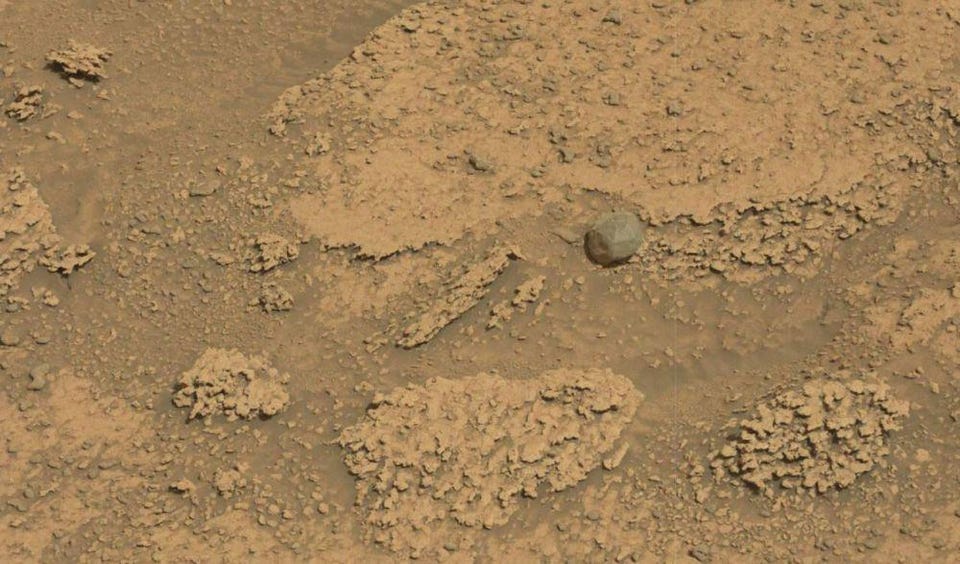NASA Rover Spots Strange Rock On Mars


NASA mysterious rock
NASA/JPL-Caltech/MSSS
In a photo taken by the rover Curiosity on its 3,709th day on Mars, a strange rock spotted in the upper right of the image has NASA experts puzzled. The rock of unusual grey color is sitting atop the reddish bedrock.
“Pau Baru” – as the rock was named – could be a meteorite fragment or a pebble of a different rock formation, transported by wind or water to its actual position. The team operating the rover will try to analyze Pau Baru in the coming days to determine its composition and possible origin.
In 2012, NASA sent the Curiosity rover to Mars to explore Gale Crater, a large impact basin with a massive, layered mountain in the middle. As Curiosity has traversed along the Mars surface, it spotted various geological oddities.
In 2016, Curiosity discovered a dark, golf-ball-sized object of unknown nature on the Martian surface. A chemical analysis revealed high iron, nickel, and phosphor levels, suggesting that it is a nickel-iron meteorite.
In 2014, Curiosity documented an unusually large meteorite named LebanonI and a smaller fragment named Lebanon II. Scientists were surprised that the 2-meter-wide iron meteorite didn’t disintegrate during its descent into the Martian atmosphere. The largest iron meteorite found so far on Earth is the Hoba meteorite, measuring 2,7 meters at its widest point. It is believed that Earth’s atmosphere slowed the meteorite in such a way that it impacted the surface at a terminal velocity low enough to prevent disintegration at the moment of impact.
Just recently a study announced the discovery of opal in fissures crossing the Martian bedrock thanks to photos and chemical data collected by Curiosity.
